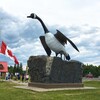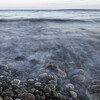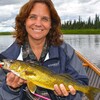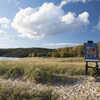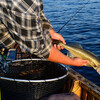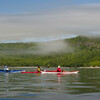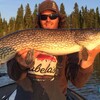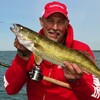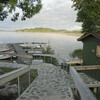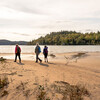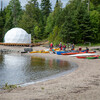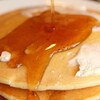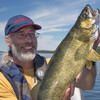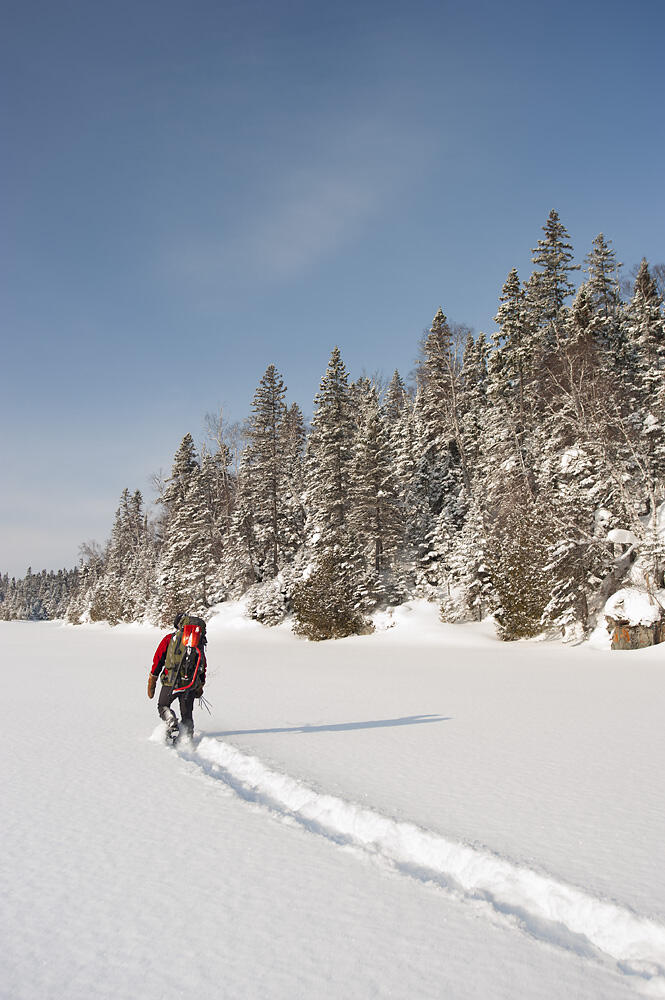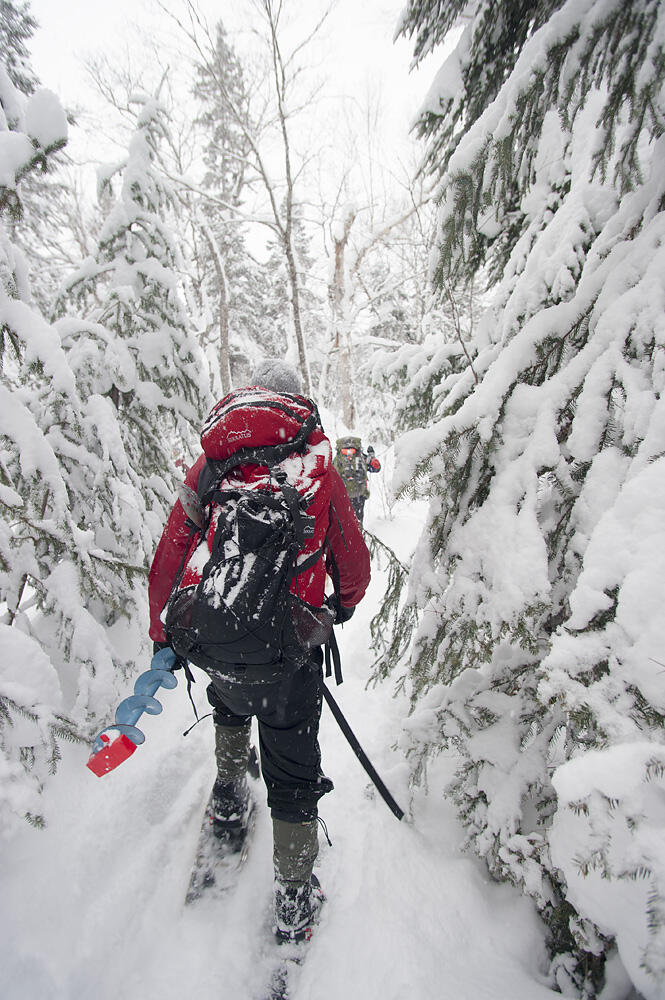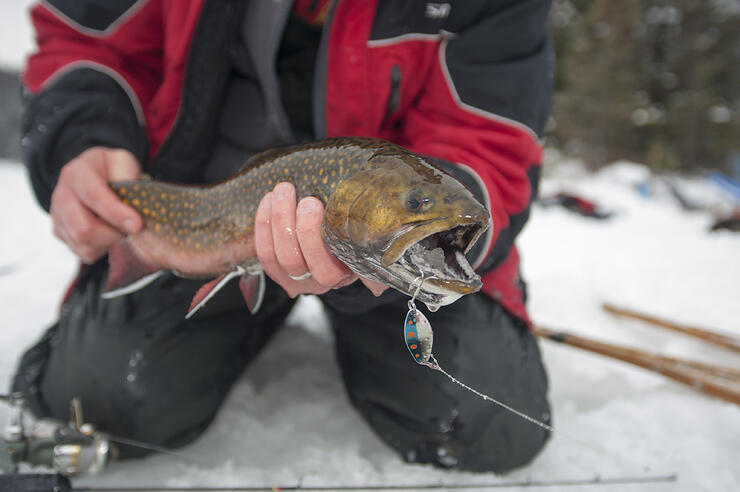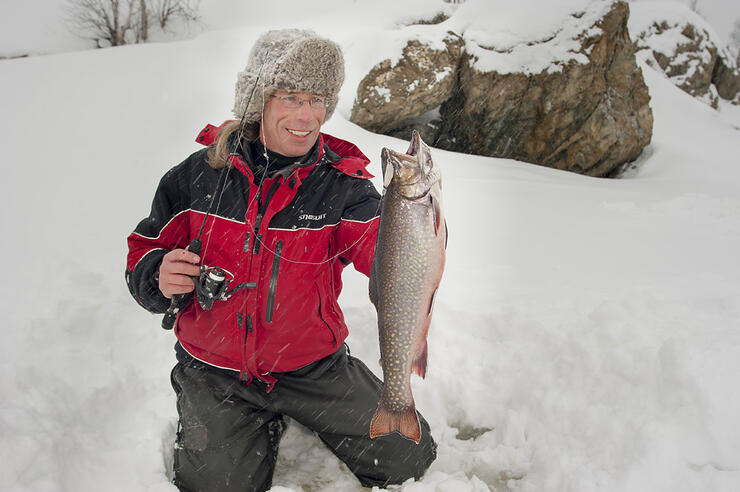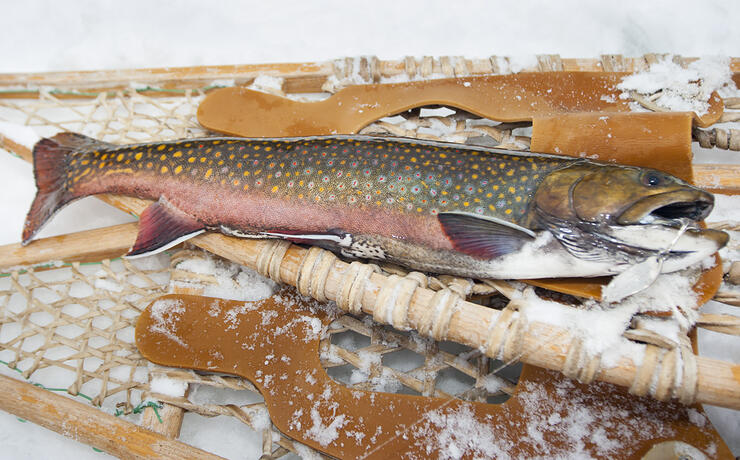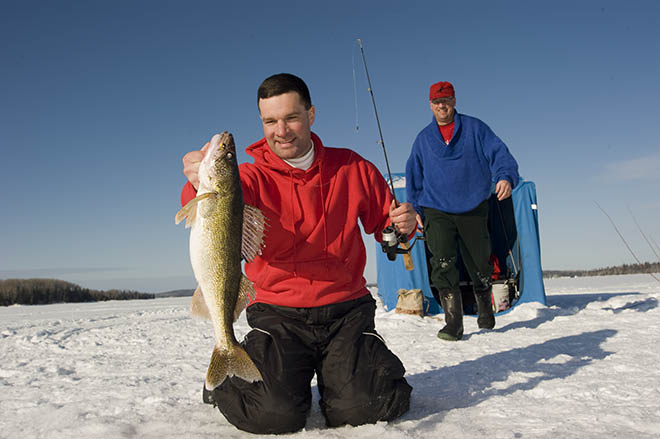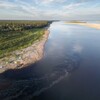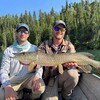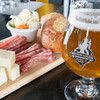
Icing Algoma Square-Tails
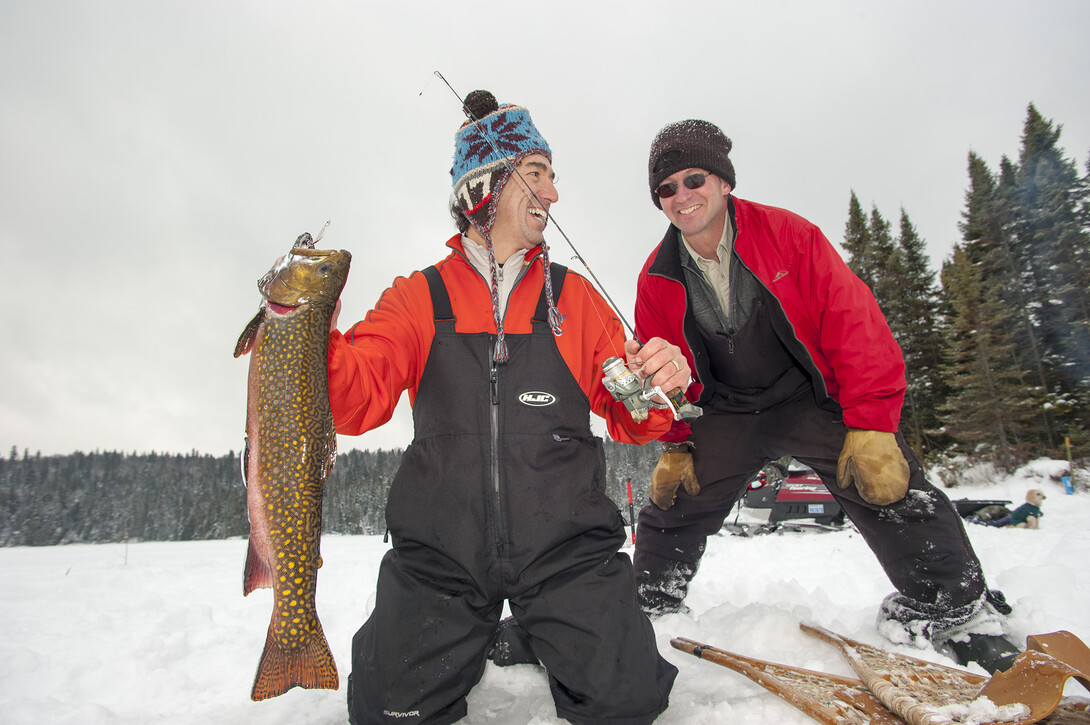
Algoma Country may possess some dramatic landscapes, but from an angling standpoint, her location within the heart of brook trout country is her most distinguishing feature. There are few places on earth that can grow brook trout. They demand cold, clean water protected by wilderness. With hundreds of lakes cradled within a wintery granite landscape, ice fishing is the best way to experience the finest Algoma has to offer. And Algoma’s finest is world-class.
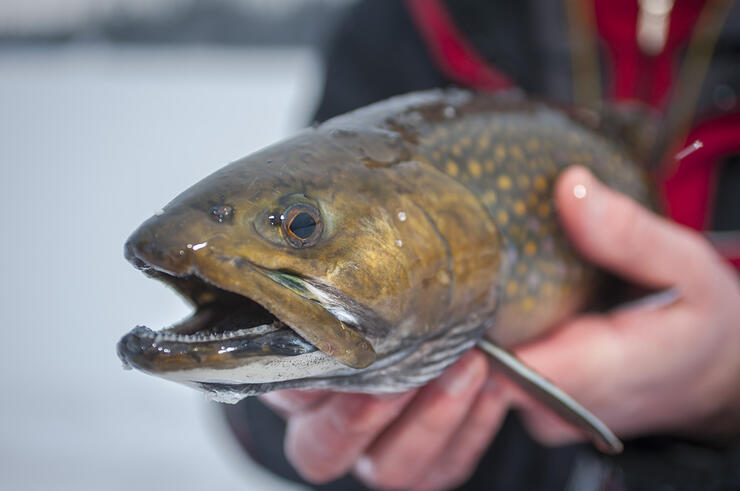
Enveloped by frosted cliff faces and cedar-shrouded shorelines swim creatures of savage beauty. Dark olive-green backs are covered with cream-coloured vermiculation. Flanks are be-speckled with red spots surrounded by bluish haloes. Beneath this exquisite collage rests succulent flesh ranging from orange to deep red. The brook, or speckled trout, rounds out its impressive resume with the fact that it bites year-round, especially in the winter. If you are one smitten by the wiles of the speckled trout, winter is too long to go without tangling with this graceful species.
Not-So-Secret Lakes
Sequestered within the undulating bedrock of the Canadian Shield are lakes where wild trout amass length and girth. Word of mouth is one way to find waters where trout grow thick and strong but bear in mind that trout anglers often play their cards close to their chests.
A more forthcoming source of information is the Ministry of Natural Resources and Forestry’s Fish ON-Line site. While it shows the wide variety of fish species present in area waters, the observant angler will note that there are hundreds of small inland lakes in Algoma Country that hold brook trout. Many of these are stocked: planted with yearling trout on a “put, grow and take” basis to provide a sport fishery for anglers.
These hatchery-reared specimens are every bit the game fish as their native brethren. In fact, many stocked lakes receive Nipigon-strain trout that can live to eight or nine years and easily attain wall-hanger status. Because these lakes are stocked to be fished, Fish ON-Line provides all the information needed to find accessible waters that can provide exceptional angling.
Fish Friendly Communities
From Sault Ste. Marie and Blind River in the South, up to Hearst, Geraldton, and Nakina to the North, Algoma Country is full of communities that welcome ice anglers. Great hard water fishing along with accommodations, bait and tackle shops, and restaurants provide the foundation for an extended ice fishing vacation. Most cities and towns are linked by groomed OFSC snowmobile trails that lead anglers to productive waters. There are also lodges, guides, and outfitters open year-round to play an integral role in an unforgettable Algoma Country brook trout adventure.
Think Shallow
The shallows are the most productive part of a lake, even in winter. Virtually the entire food chain starts and finishes in shallow water. Fungus and bacteria that thrive on rotting vegetation are food for microscopic animals called zooplankton. Subsequent links in the chain include hellgrammites, caddis and mayfly nymphs, leeches, minnows, snails, crayfish, freshwater shrimp, salamanders, and frogs—all found in shallow water and all prominent on the brook trout menu.
While brook trout feed in the shallows, they like the security of deep water nearby, making the ideal spot a shallow area adjacent to the depths. The interesting structure above water often reflects the structure below. Points, islands, inflows and outflows, rock piles, and narrows all point to shallow feeding areas.
Connecting With Brook Trout
After choosing a spot, drill at least six holes per angler covering a range of depths from as shallow as two feet down to about 15. Minnows and worms are readily available in the winter and satisfy trout’s penchant for live bait. A spool of 8- to 10-pound-test monofilament line, rigged with a number six or eight single hooks and weighted with split shot, works well to suspend live bait just off the bottom.
Ice anglers are allowed two lines. Tandem live-bait rigs can be effective, but jigging a second line is often the undoing of buxom square-tails. A jigging rod is simply a short version of what we’d use in summer. Continuously lifting the rod tip and letting it down imparts movement to shiny spoons like the 1/3 ounce Williams Nipigon or 1/4 ounce Mepps Little Wolf. With a jigging rod, it’s easy to move from hole to hole and cover a wide range of depths quickly.
Whether we fish stocked lakes or frequent native brook trout waters, pulling a fat speckled creature through a hole in the ice is a challenge worth pursuing. Winter is far too long not to probe the frozen surface of Algoma’s inland lakes. Icing brookies are just another reason why life is good in the heart of trout country.
Recommended Articles
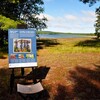
The Group of Seven in Algoma

9 Facts to Know about the Agawa Canyon Tour Train
